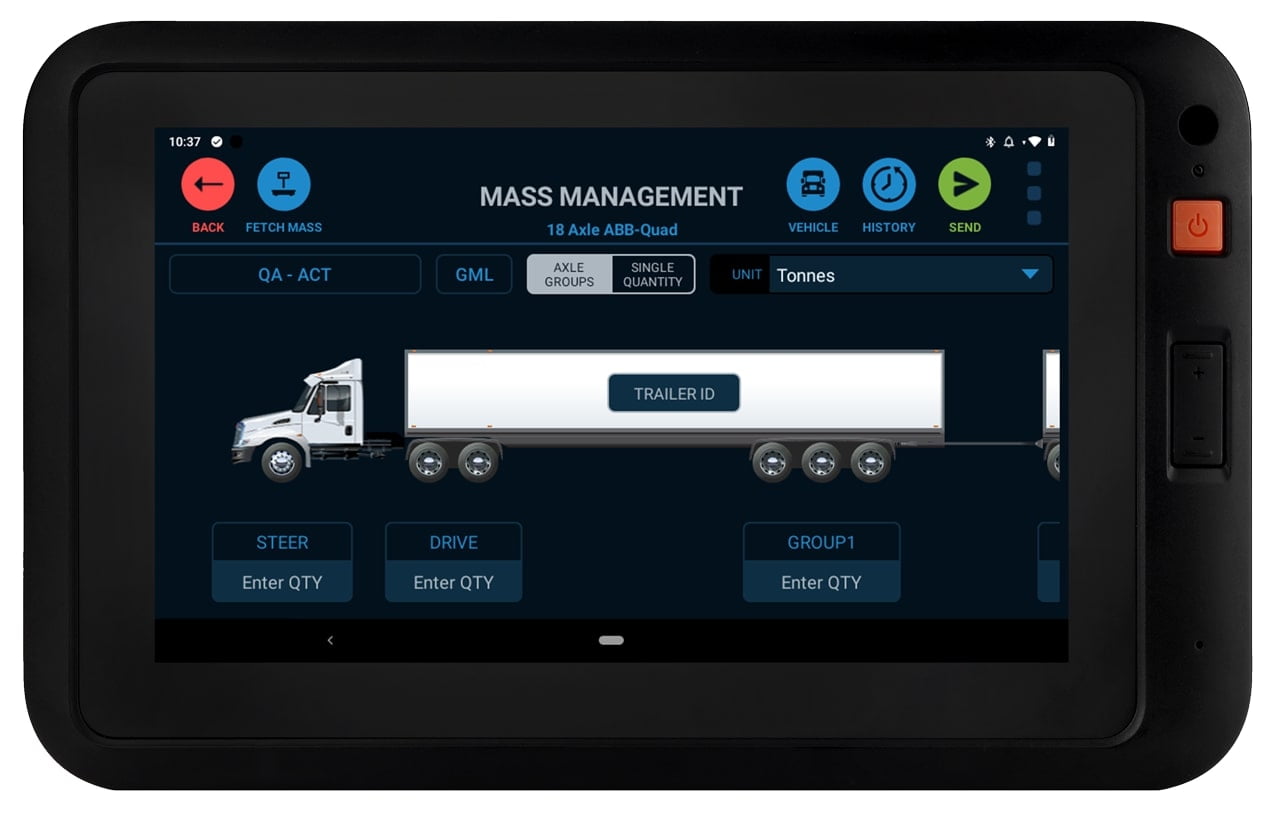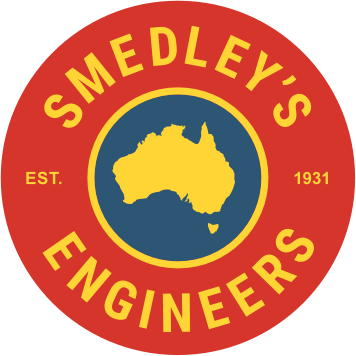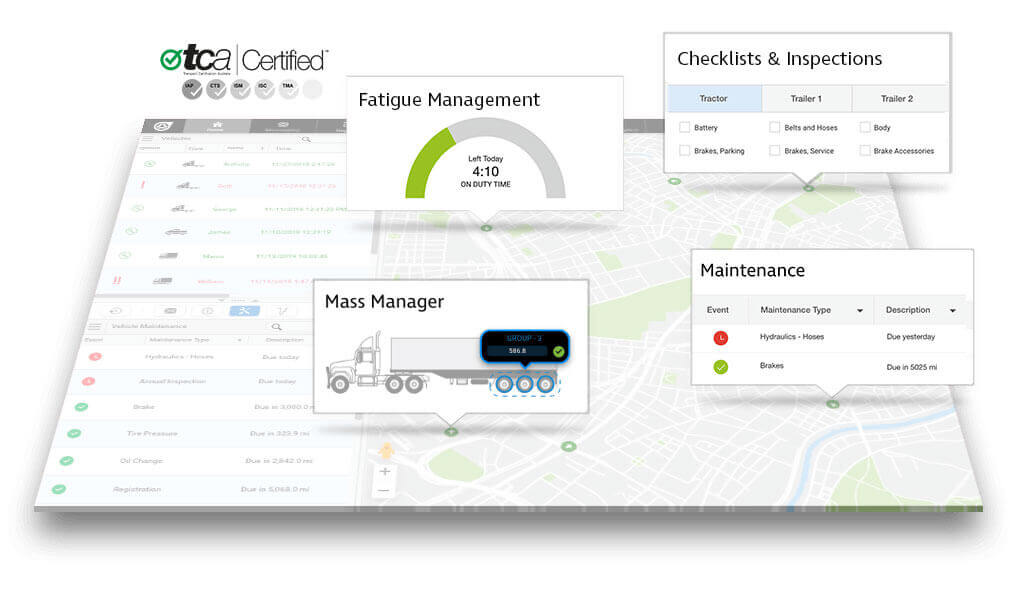On Board Mass compliance for HPFV and PBS combinations goes live in Victoria on 1st November 2021
Smedley’s Engineers, a leading Performance-Based Standards assessment firm, has announced the pending introduction of new onboard mass measuring regulations for the state of Victoria.
From 1 November 2021, all High Productivity Freight Vehicles (HPFV) and Performance-Based Standards (PBS) combinations greater than 68.5 tonnes Gross Combination Mass (GCM), that are used in Victoria must, by law, be equipped with a Smart On-Board Mass (OBM) measurement system integrated with the vehicle’s telematics.
Victoria joins New South Wales in instituting this regulation, which requires the Smart OBM system to be linked to either the Intelligent Access Programme (IAP), Telematics Monitoring Application (TMA) or Road Infrastructure Management (RIM) program.
According to Smedley’s Engineers Managing Director, Robert Smedley, whether operators of HPFV choose to use IAP, or TMA to meet the new regulation, it is all about the electronic data that is collected from vehicles and shared with the Transport Agencies.
“The IAP is an application of the National Telematics Framework and allows transport operators to gain greater access to the road network with increased payloads in return for monitoring compliance with specific access conditions via approved telematics,” said Smedley.
“Heavy vehicles are monitored using a Transport Certification Australia (TCA)-certified telematics device supplied by an IAP service provider, such as Teletrac Navman, which has the In Vehicle Unit (IVU) certified for this purpose.”
The TMA provides a flexible, cost-effective approach to the management of heavy vehicle access using telematics.
According to Smedley, compared with the IAP application, TMA offers a lower level of assurance for lower risk activities, and can be an effective option for transport operators who may not have previously considered opting-in to regulatory telematics applications.
“TMA offers a low-cost point of entry for operators to gain road network access and is more flexible in its requirements of telematics systems,” said Smedley.
“For instance, devices already fitted to vehicles, provided they are TCA type-approved, can be used to manage road access and compliance.”
Smedley reiterated that TMA provides the operator with the ability to unlock Higher Mass Limits (HML) PBS schemes, Hill Decent Monitoring, and more, based on the state of application and requirements, and is suitable for low- to medium-risk vehicles and transport activities.
RIM is an application of the National Telematics Framework and provides a new way of collecting road use data from vehicles to better inform and optimise the management of road networks.
According to Smedley, RIM is a low-cost application that monitors parameters of location, time and identity while speed data is not collected. It is important to note that RIM can’t be used where OBM is required.
“Transport operators can use their existing hardware including Qubes, VT101 or IVU to participate in a number of schemes including, but not limited to, the Safety, Productivity & Environment Construction Transport Scheme (SPECTS), Farm Gate Access Scheme and RIM PBS Level 1 and 2 Vehicle Monitoring Scheme,” said Smedley – adding that there are three TCA-approved Smart OBM systems available in the Australian market at present – Tramanco, Loadman and Airtec – with others set to arrive shortly.
Smedley’s Engineers is an authorised national agent of Teletrac Navman, one of the five suppliers of IAP and TMA systems to the transport industry.
IAP, TMA & RIM – What are the differences?
It is all about what data is collected from vehicles and shared with the Transport Agencies.
The Intelligent Access Program (IAP) is an application of the National Telematics Framework and allows transport operators to gain greater access to the road network with increased payloads in return for monitoring compliance with specific access conditions via approved telematics. Heavy vehicles are monitored using a Transport Certification Australia (TCA)-certified telematics device supplied by an IAP service provider. Teletrac Navman has the In Vehicle Unit (IVU) certified for this purpose.
Benefits
- Higher productivity through carrying more with less; with the increased payload a transport operator can move the same amount in fewer trips.
- Application across multiple schemes including Higher Mass Limits in QLD, Mobile Cranes and Concrete Pump Trucks, Victorian higher productivity vehicles and PBS combinations across the country.
- Reduction in fuel usage and greenhouse gas emissions.
- Integration with on-board scales that enables access to the On-Board Mass monitoring Program that provides real-time mass readings, leading to efficiency gain and access to using PBS enabled vehicles on the road.
- Mass data from scales auto-populated into the in cab units
- Driver is able to submit real time IAP and mass declarations from the scales to the in cab units at anytime

The Telematics Monitoring Application (TMA) provides a flexible, cost-effective approach to the management of heavy vehicle access using telematics. It offers a lower level of assurance for lower risk activities, compared to the Intelligent Access Program (IAP)
application, and opportunities for transport operators who may not have previously considered opting-in to regulatory telematics applications.
Benefits
- Low-cost point of entry for operators to gain road network access.
- More flexible in its requirements of telematics to manage road access and compliance.
- Provides the operator the ability to unlock HML, PBS schemes, Hill Decent Monitoring, and more, based on the state of application and requirements.
- Devices already fitted to vehicles may be used if TCA type-approved.
- Suitable for low to medium risk vehicles and transport activities.
- Driver can submit real-time TMA declarations using the mass manager application on the in cab unit.
- Reporting available of activities to help with auditing and compliance requirements.
- As there is no requirement for certificate-based evidence for prosecution purposes, TMA can deliver a high quality of vehicle monitoring without many overheads associated with chain of evidence for data.
Road Infrastructure Management (RIM) is an application of the National Telematics Framework and provides a new way of collecting road use data from vehicles to better inform and optimise the management of road networks.
Benefits
- RIM is a low-cost application that monitors parameters of location, time and identity (speed data is not collected).
- Transport operators can use their existing hardware (Qubes, VT101, In Vehicle Unit (IVU)).
- Enables participation in a number of schemes including but not limited to the Safety, Productivity, Construction and Environment
- Transport Scheme (SPECTS), Farm Gate Access Scheme and RIM PBS Level 1 and 2 Vehicle Monitoring Scheme.
Smart OBM
There are three Transport Certification Australia (TCA) approved Smart OBM monitoring systems available in the Australian market at present; Tramanco, Loadman and Airtec, with others set to arrive shortly.
Where the IAP & TMA can pinpoint the location of the vehicle through GPS, the Smart OBM communicates the real time axle-group mass to TCA via IAP/TMA which verifies compliance. Any permits linked to the truck can be then checked against the location data and any off-route or anomalies can be queried with the operator.
The Smart OBM systems available offer a variety of features and benefits, resulting in varying hardware costs, to which must be added installation and calibration. Calibration must be undertaken each time the combination is split and other trailers added or a new prime mover is attached to the trailers. Calibration must also be undertaken every six months.
Smart OBM system installation requires the trailer builder or service centre to install pressure sensors in the airline connected to the airbags. This then connects to the system controller. There will be a control or junction box for each axle group or trailer with a separate unit required for a converter dolly.
In the cab, a readout unit allow the drivers to see the total and individual axle group masses of the combination, and this can be connected to the IAP or TMA system for communication out of the vehicle.
When connected, the IAP or TMA system will communicate the vehicle’s location and mass to the authorities at regular intervals. Transferring this real-time recordable data will dissuade the driver from travelling over restricted bridges or routes, thereby incurring infringement notices and fines.
For more information on how Smedley’s Engineers can help ensure compliance, please contact the main office on 03 9421 6697 or visit www.smedleys.co
To view approved OBM systems on the TCA website, visit:
www.tca.gov.au/hardware/type-approved-obm-systems/
Smedley’s Engineers
August 2021

